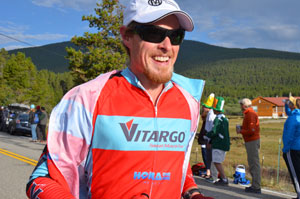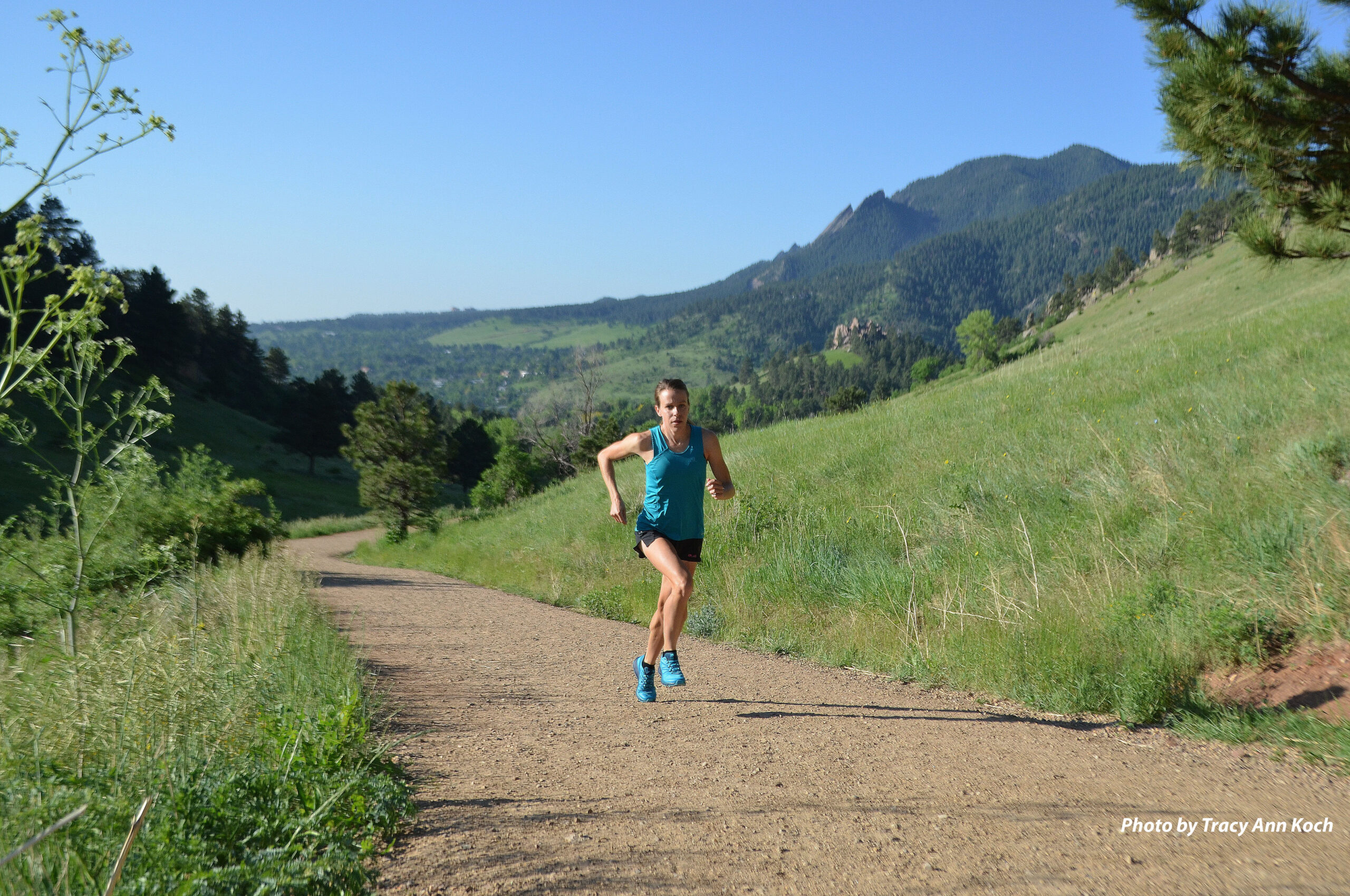
Keep the Quality: Training Tips from Travis Macy
 Leadman record holder and coach Travis Macy shares five key Leadville Race Series training tips.
Leadman record holder and coach Travis Macy shares five key Leadville Race Series training tips.
A recent trip to Leadville for a snowshoe race reminded me of just why I love the town and its races so much. When I started coming to the Leadville Trail 100 Run in the late 80s as a little kid cheering for his dad, the town was quiet and unpretentious. Though hype rules Leadville during summer race weekends, the mellow feel remains in the winter; I highly recommend a visit for some high altitude training with snowshoeing, nordic skiing or snowbiking out of the Tennessee Pass Nordic Center. No matter which sport you choose, the hills at 10,500’ are guaranteed to crank your heart rate!
With February upon us, you’re probably already thinking about preparation for one or more events in the 2014 race series. Whether you’re going big with Leadman or coming up for only the 10K, you’ve got a lot to look forward to. Here are a few principles that helped my last year in the Leadman Series.
1. Keep the quality.
Doing plenty of long runs and/or rides is definitely important if you want to finish the longer Leadville races, but I believe shorter, quality workouts involving high heart rate and faster pace are just as essential. In 2013, I estimated from the start of the year that averaging 12 minutes/mile in the LT100 Run would allow me to compete for the series win. I just about hit that pace on race day, but it was NOT because I did a lot of training at 12 minutes/mile. In order to become more efficient at that relatively slow pace, I focused on becoming more efficient at faster paces. The majority of my running miles–which, at 40-50 per week were not a ton because I focused on speed and hills–were at 7-9 minutes/mile. I also completed regular workouts of 1-mile and shorter intervals at 5:30/mile and faster. I did not plan to do any of the 100-mile run at significantly elevated heart rate, but I did that often in training. Simply put, working alone or with a training group, partner(s) and/or coach to develop intentional high-end interval workouts on regular basis can really pay off.
2. Dial it in.
We know we shouldn’t do it, but we’ve all done it before (probably more than once): using new gear, nutrition and/or hydration during a race without trying it ahead of time. Make this year different by thinking ahead, working intentionally to dial in your system sooner rather than later. If possible, focus especially on trying food and hydration strategies at high altitude, where your body may react differently. Whether you’re exploring super-starch carbohydrates like Vitargo, super-cushion shoes like HOKAs, super-light belt/vest materials from Ultimate Direction, or something else new and different, give it a shot during the spring, focusing on use during your build-up races.
3. Race.
Competing in one or more races as part of your preparation for key events is almost always a good idea. Mimicking race mindset and conditions can be tough to do in training, and many options exist for completing relatively shorter, faster races as prep for the longer ones. In Colorado, you might consider winter events like snowshoe races, America’s Uphill or the Colorado Ski Mountaineering Cup (skimo provides some of the best winter training around). I really enjoyed the Indian Creek MTB in the Rocky Mountain Endurance Series; held in May, the steep climbs here are great prep for the Silver Rush 50 MTB. The Collegiate Peaks Trail Run is a classic pre-LT100 event at high altitude. As you plan your race schedule, keep in mind that each race effort impacts not only your body and mind but also your family and other things going on in life. If the big events of the Leadville Race Series are your primary focus, make sure you plan a schedule that will have you going into them fresh and excited. Said otherwise, don’t do so many “training” races that you get to the big day running on fumes, either physically or mentally.
4. You should feel tired after a 50.
Athletes who are focused on a 100-mile run and/or ride often do one or more 50-mile races as part of the training program. I think this is a good idea, and the Silver Rush 50 MTB in particular is timed very well for LT100 ride preparation. Sometimes, however, athletes find themselves discouraged after running or riding 50 miles. “If a 50 is that hard, how can I do 100?” They’re right, and 50 miles is a long way to run or ride. Here’s my advice: Don’t let the way you feel after 50 miles dictate your view about whether or not you can do 100. Even though you feel totally smashed after 50–and I know I was last year after the Silver Rush MTB–you can (and will) do 100 if you commit to it. If you can run or bike 50 miles, then you can also run or bike 100 miles.
5. Commit.
You’ve probably heard Ken Chlouber say, “Commit not to quit” and “You’re better than you think you are, you can do more than you think you can.” He’s right. Mental barriers play a great role in holding athletes back, and now is the time to think carefully about your mental training, which is probably at least as important as your physical training. When you’re suffering through a tough training session or trying to drag yourself out of bed for a cold, early run or ride, tell yourself, “This is good mental training.” Think about the negative stories you tell yourself. Could you replace them with better ones? Learn about psychological principles that could be applied to your training and racing; I really enjoyed Dweck’s Mindset: The New Psychology of Success. Finally, and most importantly, make a deep commitment to yourself. To me, committing means making a choice to give up choice. Finishing the race is much easier when quitting is not an option.
Have a great summer in Leadville!
Travis
Vitargo/HOKA ONE ONE athlete and coach Travis Macy helps athletes prepare for the Leadville Race Series and other endurance running and mountain biking events. At the moment, he’s getting stoked for upcoming races by watching Olympic nordic skiing. Visit www.macyendurancecoaching.com to learn more.


